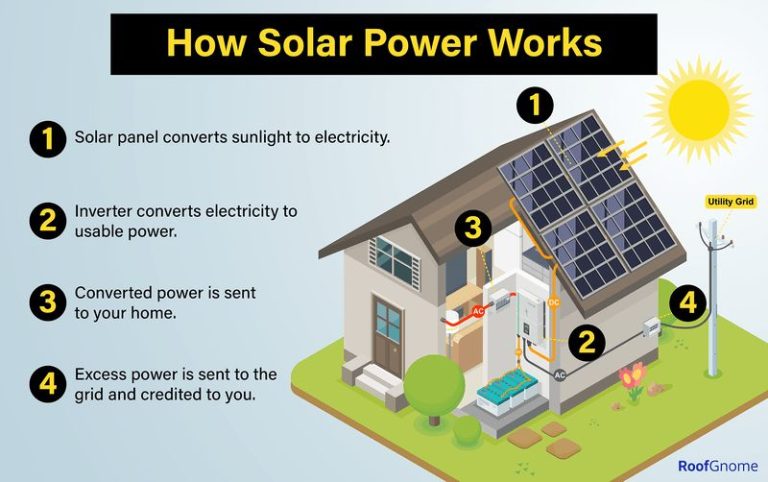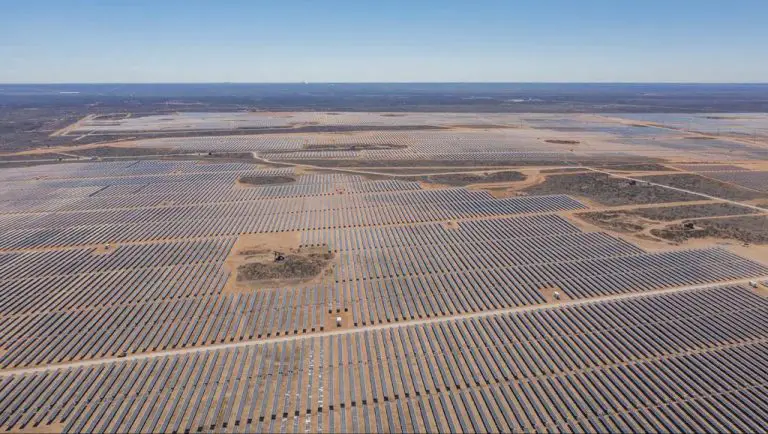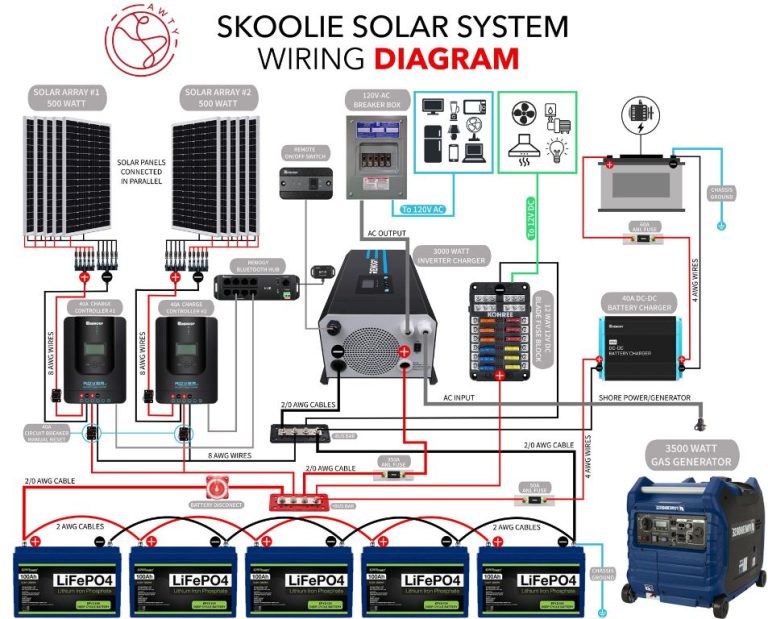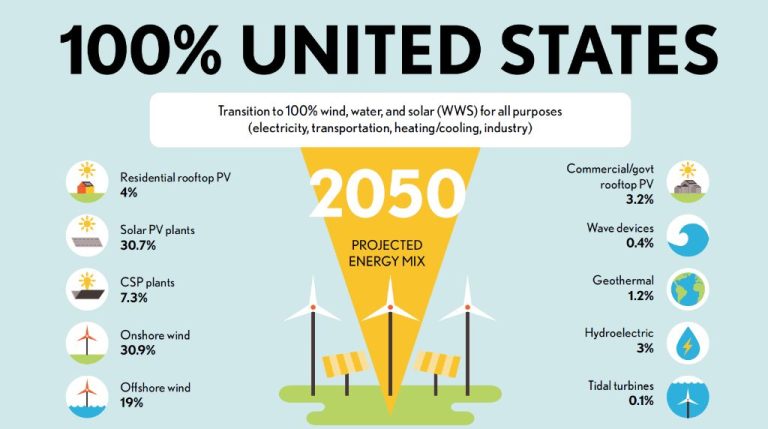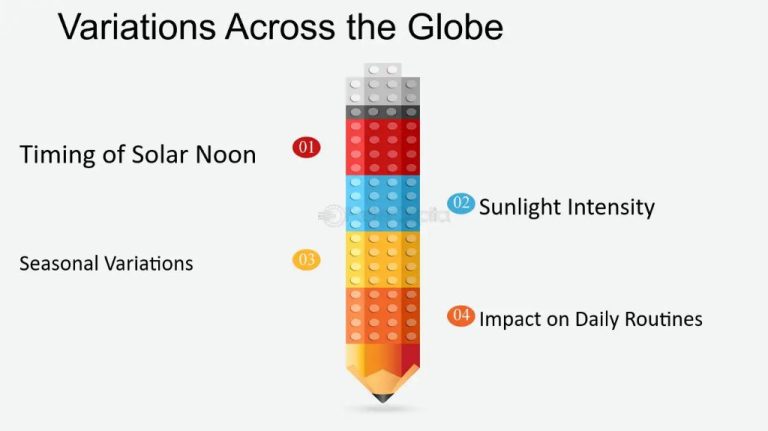Can Solar Power Heat Your Home?
With rising energy costs and growing environmental concerns, many homeowners are looking for alternative and renewable ways to heat their homes. One option that is gaining popularity is using solar power for home heating. The sun produces a tremendous amount of energy that can be harnessed in the form of heat and used to warm living spaces and water.
Solar thermal heating, also known as solar water heating, uses heat from the sun to provide hot water and space heating in homes. There are two main types of solar thermal systems: passive, which collects heat without using any electrical components, and active, which uses pumps and controls to move heat. When properly designed and installed, solar thermal systems can provide a substantial portion of a home’s heating needs in many climates.
This article explores whether solar power is a viable option for heating your home. It provides an overview of how the technology works, the different system types and components available, key considerations when deciding if solar thermal is right for your home, and examples through case studies.
How Solar Thermal Systems Work
Solar thermal systems are designed to collect heat from the sun and transfer it indoors to provide space heating, water heating, or both. There are two main types of solar thermal technologies used in homes:
Passive solar, which collects heat through building design features such as large south-facing windows.
Active solar, which uses mechanical devices and components such as pumps and fans to collect solar heat.
In active solar thermal systems, the main components involved in collecting and distributing heat are:
- Solar collectors – panels, tubes, or other solar absorber devices that collect heat from sunlight.
- Transfer fluid – usually water or diluted antifreeze solution that absorbs heat as it circulates through the solar collectors.
- Pump and controls – to circulate the transfer fluid through the collectors and system.
- Heat exchanger – transfers heat from the transfer fluid to domestic hot water or interior space.
- Storage tanks – insulated tanks that store hot water or heat for later use.
The process of harvesting heat using an active solar thermal system generally works like this:
- Solar energy strikes and heats up an absorber surface in the solar collectors.
- A heat transfer fluid is pumped through pipes in the collectors, absorbing the heat.
- The heated fluid circulates through a heat exchanger, where heat is transferred to water in a storage tank or directly to interior air/radiant floors.
- Fans and pumps distribute the heated air or water around the home as needed.
This basic concept of collecting solar heat, transferring it with a circulating fluid, and distributing it with fans/pumps provides the foundation for most active solar heating systems in homes.
Passive Solar Heating
Passive solar heating involves using building design to naturally collect, store, and distribute heat from sunlight. It does not use mechanical devices like pumps or fans. The key aspects of passive solar heating include:
– Site selection – Properly orienting the building to face south (northern hemisphere) allows it to capture the most sunlight in winter without overheating in summer.
– Aperture placement – Strategically placing more glass on the south side allows sunlight to enter and heat up the building’s thermal mass.
– Thermal mass – Materials like concrete floors or masonry walls absorb sunlight and release it slowly as heat, helping regulate interior temperatures.
– Insulation – Well-insulated windows, walls, ceilings, and floors minimize heat loss so solar gains are not wasted.
– Open floor plan – Interior spaces openly connected allow sunlight and warmth to spread more freely throughout the building.
– Passive solar design techniques can provide 10-25% of a building’s heating needs if implemented properly. Passive solar also reduces the size and costs of any auxiliary heating system that is installed.
Active Solar Heating
Active solar heating systems use pumps and controls to circulate heat-transfer fluids like water or air through solar collectors and into your home’s heating system. There are two main types of active solar heating systems:
Solar thermal collector systems use pumps to circulate a heat-transfer fluid like water or antifreeze through solar thermal collectors, which absorb heat from the sun and transfer it to the fluid. The heated fluid then flows into a storage tank where the heat is transferred and stored. When your heating system needs hot water or warm air, it draws from the storage tank.
Solar air systems use a blower or fan to circulate air through a solar collector, where the air absorbs heat from the sun. The heated air is then distributed through ductwork into the home’s living space or a storage system. This pre-warmed air can supplement a heating system by significantly reducing the system’s workload.
Compared to passive solar heating which relies on natural airflow and heat circulation, active solar systems provide greater efficiency and control. The pumps, valves and controls allow active systems to distribute solar heat in the most optimal way possible. Active solar heating works well even in cooler climates since the system’s components can be automated to operate only when solar gain is present.
Solar Thermal System Types
There are two main types of solar thermal collectors used in residential solar heating systems: evacuated tube and flat plate collectors. Each has its own advantages and disadvantages.
Evacuated Tube Collectors
Evacuated tube collectors consist of rows of parallel, transparent glass tubes. Each tube contains a glass outer tube and an inner absorber tube attached to a fin. The air is removed (“evacuated”) from the space between the two tubes to form a vacuum, which eliminates conductive and convective heat loss.
The advantages of evacuated tube collectors include:
- Higher efficiency than flat plate collectors
- Perform better in cold temperatures
- Can still collect heat on cloudy days
The disadvantages include:
- More expensive than flat plate systems
- Tubes can break if handling improperly
- Larger racks take up more roof space
Flat Plate Collectors
Flat plate collectors consist of a dark flat-plate absorber under one or more sheets of glass. The absorber heats up and transfers heat to liquid flowing through pipes attached to the absorber plate.
The advantages of flat plate collectors include:
- Less expensive than evacuated tubes
- Require less roof space
- Durable and long lifespan
The disadvantages include:
- Lower efficiency than evacuated tubes
- Lose performance in cold weather
- Less effective on cloudy days
When choosing a solar collector type, factors like climate, heating needs, and budget help determine the best system.
Sizing a Solar Thermal System
To ensure maximum efficiency and cost effectiveness, properly sizing a solar thermal system is crucial. The key factors that determine system sizing include:
Climate
The amount of sunlight your area receives impacts system sizing. Sunnier climates require smaller collectors to heat water and spaces, while colder and overcast climates need larger collectors to generate enough heat.
House Size
Larger homes with more occupants require larger collector arrays and storage tanks. The number of bedrooms, bathrooms, and overall square footage guides appropriate system sizing.
Efficiency
Highly energy efficient homes require smaller solar thermal systems. Proper insulation, sealed ductwork, and energy efficient windows and appliances reduce the heating load a solar system must meet.
Usage
The amount of hot water and heating used in the home determines system size. Homes that heavily use hot water and heating need larger collector arrays and storage tanks.
Accurately calculating heat load, hot water usage, and the above factors ensures the solar thermal system is sized for optimal performance and cost savings.
Costs and Incentives
Solar thermal systems require a significant upfront investment, but federal tax credits and local rebates can offset some of the costs. The total system cost depends on the type and size you need for your home. On average, an active system for a typical single-family home costs $4,500-$8,500 after incentives.
There is currently a 26% federal tax credit available for installing an eligible solar thermal system. Many local utilities and municipalities also offer rebates up to $2,000 or more per system to encourage renewable energy adoption. When combined, these incentives can cover 30-40% of the total system costs.
While solar thermal systems have a high initial price tag, they can pay for themselves over time from energy bill savings. With proper maintenance, systems can last 20-25 years. Be sure to calculate your long-term return on investment when considering solar thermal for your home.
Limitations and Considerations
Although solar thermal systems can greatly reduce the costs of heating a home, there are some limitations and considerations to keep in mind:
Works best in sunny climates – Solar thermal systems work by harnessing energy from the sun, so they are most cost-effective and efficient in sunny areas that get a high amount of direct sunlight throughout the year. They will be less effective in consistently cloudy or cold climates.
Roof orientation matters – Solar thermal collectors need to be oriented towards the sun, usually facing south if you are in the northern hemisphere, or north if you are in the southern hemisphere. Collectors will be less efficient if they are shaded or not optimally oriented.
May still need a backup heat source – Unless paired with significant energy storage, solar thermal systems usually still require a backup conventional heating system for extended overcast periods or at night. The solar portion can provide 50-80% of hot water and heating needs.
Higher upfront costs – Purchasing and installing a solar thermal system will have higher upfront costs compared to regular heaters or furnaces. However, the long-term energy savings often make the investment worthwhile.
Aesthetic and space considerations – Solar thermal collectors are visually noticeable, so aesthetics should be considered. And sufficient south-facing roof space is needed to accommodate the collectors.
Professional installation required – Solar thermal systems require specialized expertise to properly install. A qualified technician should assess your home and design the system.
Case Studies
There are numerous real world examples of homeowners successfully using solar thermal systems to heat their homes. Here are a few case studies:
Passive Solar Home in Colorado
This 5,000 square foot custom home in the Rocky Mountains uses passive solar design to provide most of its space heating needs. Large south-facing windows allow solar radiation to directly heat the home’s concrete floor and thermal mass walls during winter days. Overhangs shade the windows in summer to prevent overheating. On cold winter nights, a biomass boiler augments the passive solar heating. The homeowner reports saving over $5,000 per year on heating bills.
Active Solar Thermal System in Maine
A family in Maine installed an active closed loop solar thermal system to provide domestic hot water and radiant floor heating. The system contains two 20-tube solar thermal collectors that heat a glycol mixture, which transfers heat to a hot water storage tank. This solar pre-heated water then circulates through the radiant floor tubing. A natural gas boiler provides supplemental heat as needed. The family uses 65% less propane now for domestic hot water and home heating.
Solar Combi System in Minnesota
A 1960s home in Minnesota underwent renovations that included the installation of a “solar combi system” to provide radiant heating, domestic hot water, and passive solar gains. The solar combi system combines solar thermal collectors, a hot water storage tank, and an air handler that distributes heat through the home’s ductwork. Large south-facing windows were also added along with more insulation. The homeowners estimate solar energy provides about 60% of the home’s heating needs.
Conclusion
Solar thermal systems can be a viable method for heating homes and water in certain situations. The type of system, climate, utility costs, and incentives need to be evaluated to determine if solar thermal is a cost-effective option. Passive solar design can be inexpensive if incorporated into new construction or renovations. Active systems involve more equipment and installation costs, but the solar energy is free once the system is in place. With energy prices projected to rise over time, and incentives bringing down upfront expenses, solar thermal could make sense for some homeowners looking to reduce utility bills and their environmental impact.
Overall, solar thermal systems offer a renewable way to offset some fossil fuel use for space and water heating. With proper site assessment and system sizing, solar thermal can be a practical clean energy solution. While not appropriate in all circumstances, solar thermal energy can play a role in creating more sustainable and energy efficient homes.

